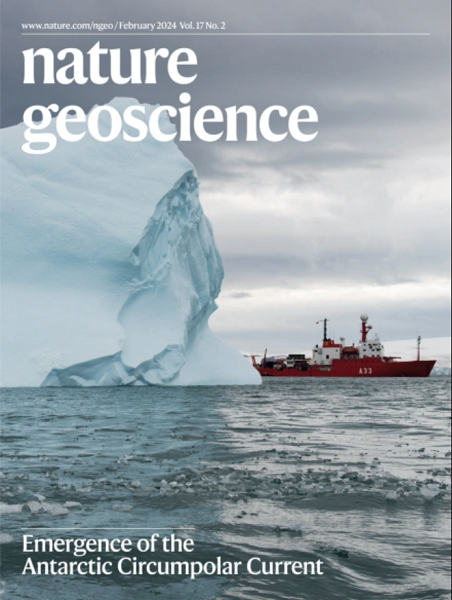地震诱发的石英压电效应形成金块
IF 15.7
1区 地球科学
Q1 GEOSCIENCES, MULTIDISCIPLINARY
引用次数: 0
摘要
金块主要出现在石英矿脉中,目前的理论认为,由于温度、压力和/或流体化学性质的变化,金会从稀释(1 毫克/千克-1 金)、高温、富含水和二氧化碳的流体中析出。然而,大金块的广泛出现与这些流体的稀释性质和石英的化学惰性不符。石英是地球上唯一丰富的压电矿物,而地震活动的周期性推动了成岩金矿床的形成,这意味着矿脉中的石英晶体将经历成千上万次的偏差应力。在这里,我们利用石英变形实验和压电模型来研究石英的压电放电是否可以解释无处不在的金-石英关联和金块的形成。我们发现,石英晶体上的应力可产生足够的电压,使溶液中的水金电化学沉积,并积聚金纳米颗粒。由于石英是绝缘体,因此通过压电驱动反应生成金的速度受到限制;然而,由于金是导体,我们的研究结果表明,现有的金粒是持续增长的焦点。我们认为这种机制有助于解释大型金块的产生,以及在石英脉裂缝中普遍观察到的高度相互连接的金网络。本文章由计算机程序翻译,如有差异,请以英文原文为准。


Gold nugget formation from earthquake-induced piezoelectricity in quartz
Gold nuggets occur predominantly in quartz veins, and the current paradigm posits that gold precipitates from dilute (<1 mg kg−1 gold), hot, water ± carbon dioxide-rich fluids owing to changes in temperature, pressure and/or fluid chemistry. However, the widespread occurrence of large gold nuggets is at odds with the dilute nature of these fluids and the chemical inertness of quartz. Quartz is the only abundant piezoelectric mineral on Earth, and the cyclical nature of earthquake activity that drives orogenic gold deposit formation means that quartz crystals in veins will experience thousands of episodes of deviatoric stress. Here we use quartz deformation experiments and piezoelectric modelling to investigate whether piezoelectric discharge from quartz can explain the ubiquitous gold–quartz association and the formation of gold nuggets. We find that stress on quartz crystals can generate enough voltage to electrochemically deposit aqueous gold from solution as well as accumulate gold nanoparticles. Nucleation of gold via piezo-driven reactions is rate-limiting because quartz is an insulator; however, since gold is a conductor, our results show that existing gold grains are the focus of ongoing growth. We suggest this mechanism can help explain the creation of large nuggets and the commonly observed highly interconnected gold networks within quartz vein fractures. Quartz emits a piezoelectric charge during deformation that may promote the formation of gold nuggets within veins in orogenic settings that experience earthquakes, according to a study using quartz deformation experiments and piezoelectric modelling.
求助全文
通过发布文献求助,成功后即可免费获取论文全文。
去求助
来源期刊

Nature Geoscience
地学-地球科学综合
CiteScore
26.70
自引率
1.60%
发文量
187
审稿时长
3.3 months
期刊介绍:
Nature Geoscience is a monthly interdisciplinary journal that gathers top-tier research spanning Earth Sciences and related fields.
The journal covers all geoscience disciplines, including fieldwork, modeling, and theoretical studies.
Topics include atmospheric science, biogeochemistry, climate science, geobiology, geochemistry, geoinformatics, remote sensing, geology, geomagnetism, paleomagnetism, geomorphology, geophysics, glaciology, hydrology, limnology, mineralogy, oceanography, paleontology, paleoclimatology, paleoceanography, petrology, planetary science, seismology, space physics, tectonics, and volcanology.
Nature Geoscience upholds its commitment to publishing significant, high-quality Earth Sciences research through fair, rapid, and rigorous peer review, overseen by a team of full-time professional editors.
 求助内容:
求助内容: 应助结果提醒方式:
应助结果提醒方式:


